Sunny by name, sunny by nature: Tender-hearted eatery brings Japanese cafe culture to an unlikely Perth location
Drop in to Hinata for nourishing Japanese breakfasts and desserts by day; then book in for a home-style omakase dinner on selected evenings.
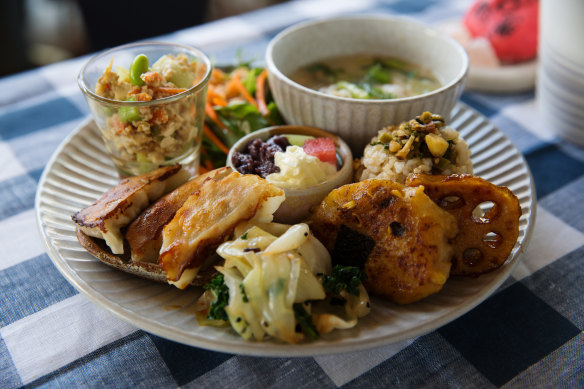
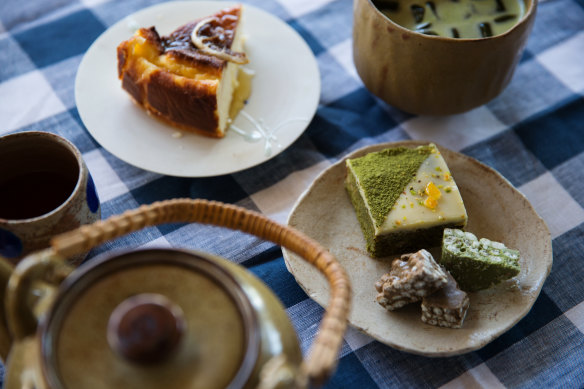
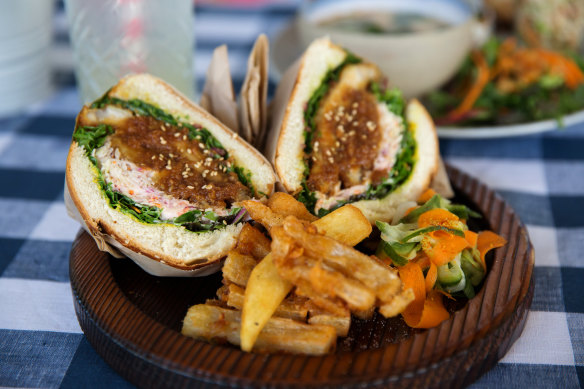
14/20
Japanese$$
“If you could only eat one cuisine for the rest of your life, what would it be?”
This is one of my favourite dinner party questions to ask, especially when said dinner party features others that put a premium on the joys of eating and drinking.
My answer, for the curious, is the food of Japan. Few countries’ food pyramids, I feel, are as diverse as the one that Japanese kids grow up learning about in school.
Like many, my introduction to Japanese food came via suburban food courts and conveyor belt sushi restaurants: all excellent gateway drugs to binge-watching subtitled Japanese cooking shows on YouTube and tracking high-end omakase (set menu) restaurants both here and in Japan – often with rigid, inflexible rules – that require months of planning plus some luck to land a booking.
Lately, my Japanese food thoughts have been consumed by a different, more casual style of eatery: the kissaten, or Japanese-style cafe. These homely establishments are integral to Japanese society and are, like our own cafes, as much about socialising as they are sustenance.
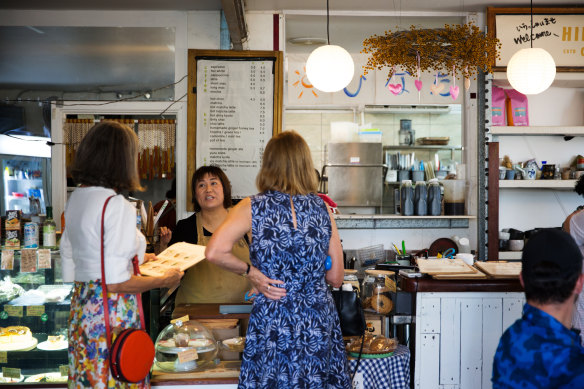
As far as local addresses that nail the kissaten brief, it’s hard to go past Hinata: a folky, tender-hearted cafe at Fremantle’s free-spirited arts hub, the Fibonacci Centre. It was also, according to a food informant, one of the few places in Perth serving a Japanese-style breakfast: a fortifying all-in of rice, fish and veg (some fresh, some pickled) that delivers on protein, carbs and colour.
At fancy Tokyo legacy hotels, brekky might appear tableside in a lacquered bento box garnished with bird’s eye views of the capital. At 80s-era hotels, breakfast is often a buffet situation where not-so-trad items such as fried chicken and tiny cocktail frankfurters hope to catch your eye. Hinata’s Japanese breakfast comes in neither a box or bain-marie, but on a plate ($23.50), yet its Technicolor payload of rolled egg omelette, pickles, soup, grilled fish and rice is no less delightful.
If the morning (or the night before) was especially busy, consider calling on the monthly rotating brunch set ($28) to save the day. That extra fiver gets you a few more dishes – February’s highlights included a gingery chilled miso soup, plus a lush and airy corn and potato “mochi” cake – and a dessert of fruit, matcha jelly and house-made adzuki (a sweet-salty red bean paste).
A beefed-up version of this plate anchors the three-course omakase (chef’s choice) dinners ($55) served Wednesday to Friday night. Your buy-in includes an entree plate, a bit more protein – toothpicks of peppery grilled chicken and supple pork gyoza, say – plus a bigger dessert offering such as crisp matcha-white chocolate cookies and a refreshing, summery jumble of cooling agar-agar jelly, fruit and black sesame ice cream. Dinner guests can also book (by day Hinata is walk-in only); BYO ($3 corkage); and, if it’s their birthday, be serenaded by Hinata’s cheery owner Tomoe Echo and her team.
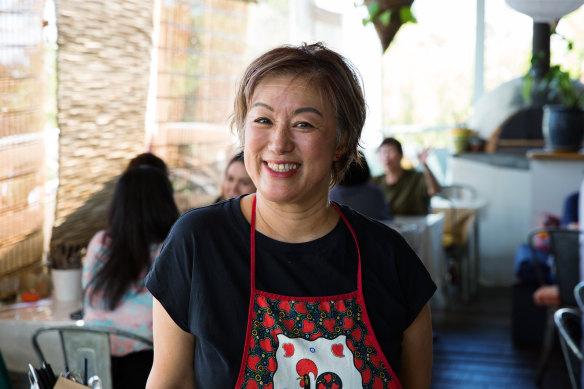
The brunch and breakfast plates are, along with a pork katsu sando ($27.50; more of a burger than a traditional sandwich, which is a shame as the brioche bun throws out the original’s crucial pork cutlet-to-bread ratio), the cornerstones of Hinata’s brunch menus that change quarterly. Although these mainstays are compelling reasons for Japanophiles to visit – and, judging by the crowd on weekends and even some weekdays, it seems like they already are – many of my fondest memories are tied to the seasonal dishes that come every few months.
I’ll be sad to see the back of summer installations such as the verdant chilled green tea soba salad ($25.50) with its tempura enoki and tofu strips; plus the kakigori ($15) shaved ice dessert piled high with fruit, house-made matcha pudding and nicely chewy marbles of dango rice cake. In the past, nourishing vegetarian curries and dense okonomiyaki (savoury pancakes) have also helped me through some cold, Japan-less Perth winters. The Aladdin’s cave that is Hinata’s cake cabinet – matcha baked cheesecakes! Frangipane tarts with local white genoa figs! – meanwhile, is a constant temptation year-round.
By now, I suspect some people might be wondering that, as good as deep-fried mushrooms are, where’s the raw fish? Where’s the fatty tuna belly? Where’s the expensive wagyu with marbling scores of 100000? Where are those luxury ingredients that – rightly or wrongly – have come to define Japanese dining? (Or at least the pointy, ostentatious end of Japanese food culture.)
Hinata isn’t that sort of place.
Rather, Hinata, like most kissaten, is an outfit serving homestyle Japanese food: a predominantly vegetable-based cooking style founded on good nutritional and economical thinking. (Many of the dishes on the brunch menu are vegetarian with almost everything available in a vegetarian or vegan variant.)
Traditionally, this style of cooking was the domain of the shufu (“housewife”) and represented a pragmatic, decidedly un-cheffy approach to food. One would not be wrong to draw parallels between shufu cooking and the spirit of our own CWA cookbook.
I mention this because, as social media might tell you, next Friday is International Women’s Day. (Indeed, Hinata is holding its own IWD event next Friday that may still have tickets left.)
While it’s encouraging that one day of the calendar has been designated as a focal point for the women’s rights movement, it’s what happens those other 364 days – or, in 2024’s case, 365 days – that determines how useful all those March 8 hashtags, photo ops and iced cupcakes are when it comes to moving the needle on gender equality.
Which begs the question: are all of us in the food ecosystem – from eater to chef, reader to writer – doing our bit for the cause? While it’s safe to say that most of us have ditched the (absurd) idea that kitchens and bars are a male domain, unhelpful and imperceptible gender-based thinking is still part of the dining landscape.
Are we still gendering dishes and drinks as blokey or girly? Are we forgetting to acknowledge the (often behind-the-scenes) contributions that female owners and senior staff make to businesses? Are we, in an era and industry where bold personalities, chest-beating and bravado often yield the biggest cut-through, properly acknowledging the joy that soulful, introverted and nourishing eateries such as Hinata – and Anisa Hirte’s Queen of Leeds, or Dao Thanasothorn’s Baan Baan, and so many others – bring to our lives?
The low-down
Vibe: a tender-hearted Japanese cafe where everyone – including vegans and vegetarians – is made to feel welcome
Go-to dish: breakfast plate; omakase dinner
Drinks: western coffee and Japanese-style hot and cold drinks including sodas, homemade ginger ale and high-grade matcha from Subiaco’s Green Tea House
Cost: about $60 for two ($110 for dinner) excluding drinks
Restaurant reviews, news and the hottest openings served to your inbox.
Sign up